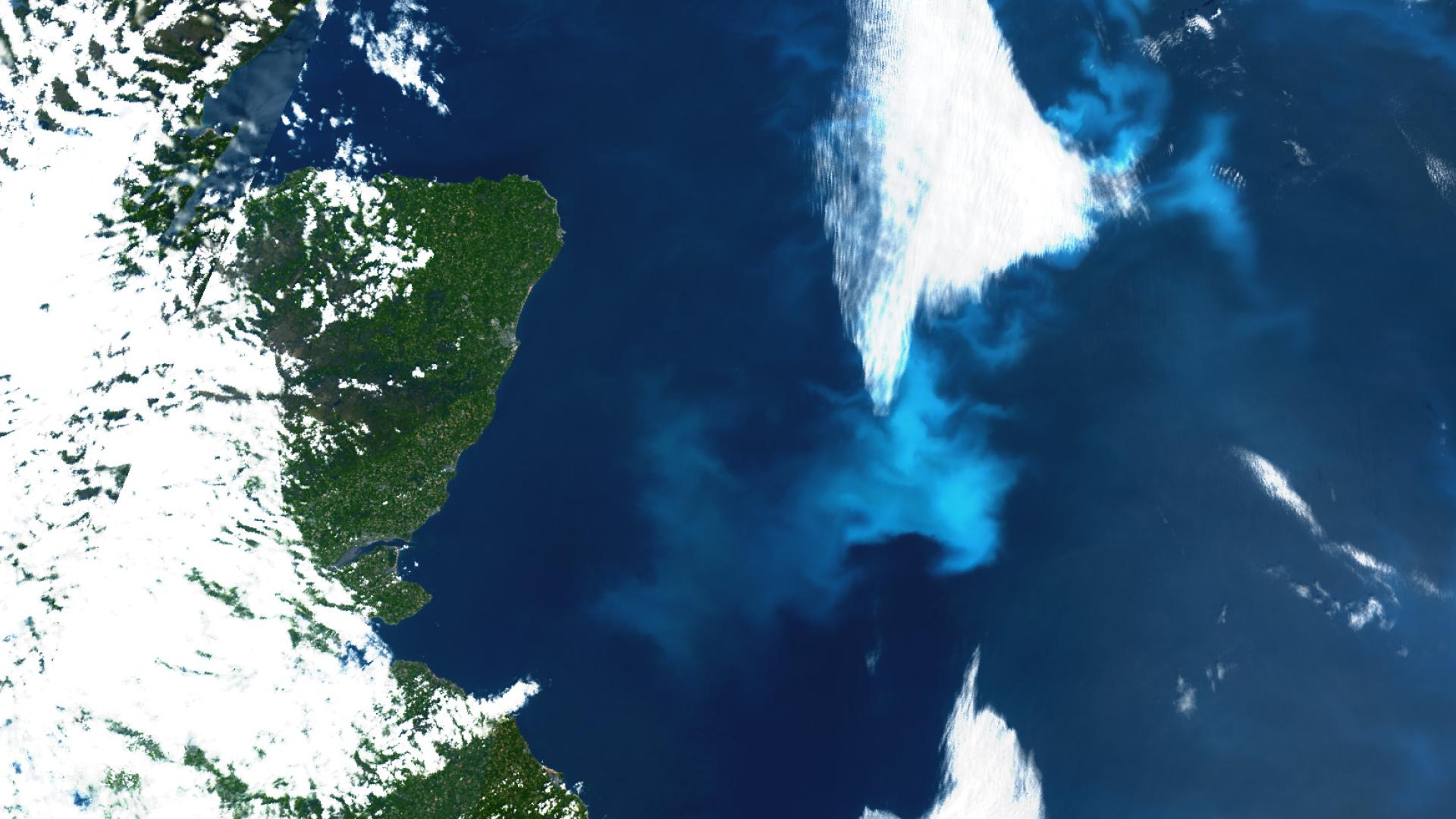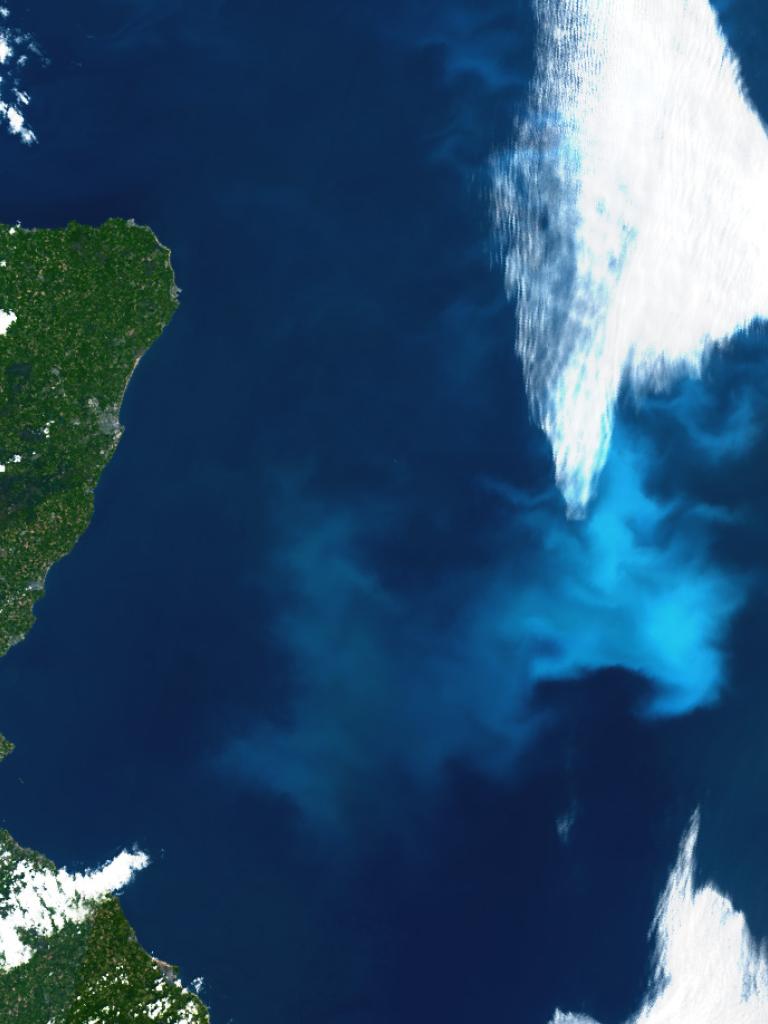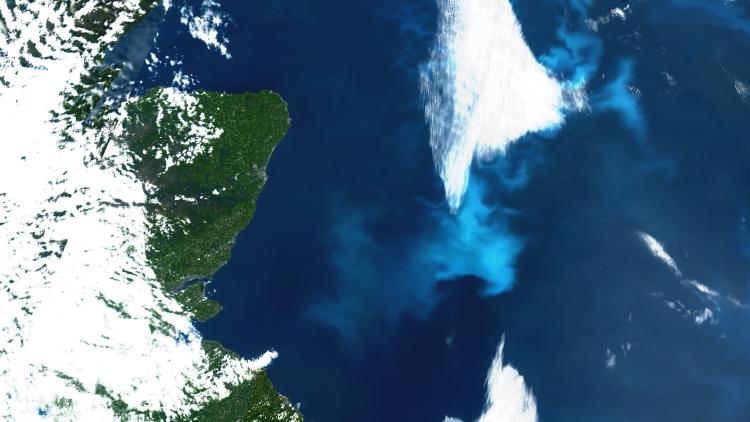The bloom (cyan colour in the image) is most likely caused by coccolithophores, which are microscopic single-celled plant-like organisms that live in large numbers throughout the upper layers of the ocean.
These tiny microscopic plants are covered in an armour plating of white chalk plates, which means that when they form massive blooms of billions of coccolithophores they can turn the sea a milky colour and this can sometimes be seen from space.
Phytoplankton play a key role in marine ecosystems as the basis of the food chain.


